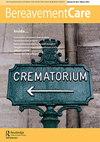Editorial
Q3 Nursing
引用次数: 0
Abstract
Welcome to this edition of the British Journal of Music Education. It comes during a time of ongoing challenge around the world as the Coronavirus pandemic continues to cause widespread disruption to multiple aspects of our lives, including models of schooling. We have tried to capture some of the emerging situation relating to music education from a UK perspective in a brief editorial research article; the editorial of a journal offers us a unique opportunity to present emergent stories that provide a commentary on music education in the here and now and capture change over time. We are delighted that the articles published in this edition once again demonstrate the breadth and depth of music education around the world and its important position across education, families and societies. Luan Shaw’s study of instrumental teacher education in conservatoires and its role in preparing students for employment in the profession shines a spotlight on the importance of teaching as part of a portfolio career for many conservatoire graduates. The article reports on the subsequent impact of an optional ‘further pedagogy’ unit offered to final year undergraduates at an English conservatoire. This module is run in partnership with a Music Education Hub, offering authentic opportunities to gain ‘real-life’ experience as an instrumental teacher. From following up former students and eliciting their perceptions of the impact of the module on their teaching, the article draws out interesting considerations for the further development of instrumental teaching curricula during and after professional training. The next two articles are related to different aspects of informal learning models. Anna Mariguddi’s research focusses on perceptions of informal learning from teachers and students in England following a Musical Futures approach and also utilises interviews with three key figures close to the development of informal learning with a Musical Futures context (ILMF). The article draws four key areas: ‘the phenomenon as a problem solver; adaptations and misconceptions; revolution within music education; and tensions of freedom versus authority and marketisation’. Alison Butler, Kelly Bylica and Ruth Wright’s article Informal learning of popular music: gender monoglossia and heteroglossia reports on a small-scale study in Canada investigating ‘the relationships between students’ perceptions and practices of gender in popular music education with particular attention given to communication, instruments and technology and development of freedoms and constraints’. The findings of this study suggest that there is much more research required if we are to more fully understand the complexities of the issues raised. The need for music education to be mindful of real-life experiences is often talked about in applied research. The next article focuses on eliciting the artistic and cognitive processes used in collaborative composition. From studying advanced students and professional electroacoustic composers engaged in creating new musical pieces through online collaboration, Michele Biasutti and Eleanora Concina elicit some interesting findings relating to the role of collaboration and make some suggestions for the importance of considering this within music education. The next article draws out some interesting perspectives on the well-documented generalist/ specialist distinctions and the differing focus of music education across different parts of the world. Edward Gubbins’ research, an international comparative examination of the Irish generalist and the American specialist models of music education from the teacher’s perspective, highlights社论
欢迎收看本期《英国音乐教育杂志》。这是在世界各地面临持续挑战的时期发生的,因为冠状病毒大流行继续对我们生活的多个方面造成广泛干扰,包括学校教育模式。我们试图在一篇简短的编辑研究文章中,从英国的角度捕捉一些与音乐教育相关的新情况;一本杂志的社论为我们提供了一个独特的机会,来呈现一些突发的故事,对此时此地的音乐教育进行评论,并捕捉随着时间的推移而发生的变化。我们很高兴本期发表的文章再次展示了世界各地音乐教育的广度和深度,以及它在教育、家庭和社会中的重要地位。Luan Shaw对音乐学院器乐教师教育及其在学生就业准备中的作用的研究,突显了教学作为许多音乐学院毕业生档案职业的一部分的重要性。这篇文章报道了一所英语学院为大四本科生开设的选修“继续教育学”单元的后续影响。该模块与音乐教育中心合作运行,为获得乐器教师的“现实生活”体验提供了真实的机会。通过跟踪以前的学生,了解他们对该模块对教学的影响的看法,文章为在专业培训期间和之后进一步发展工具教学课程提出了有趣的考虑。接下来的两篇文章涉及非正式学习模式的不同方面。Anna Mariguddi的研究重点关注英国教师和学生对音乐未来方法下的非正式学习的看法,并利用对三位接近音乐未来背景下非正式学习发展的关键人物的采访。文章提出了四个关键领域:作为问题解决者的现象;适应和误解;音乐教育革命;以及自由与权威和市场化之间的紧张关系。Alison Butler、Kelly Bylica和Ruth Wright的文章《流行音乐的非正式学习:性别单舌症和异舌症》报道了加拿大的一项小规模研究,该研究调查了流行音乐教育中学生对性别的认知和实践之间的关系,工具和技术以及自由和限制的发展。这项研究的结果表明,如果我们要更充分地了解所提出问题的复杂性,还需要更多的研究。在应用研究中,音乐教育需要注意现实生活中的经历。下一篇文章的重点是引出合作作文中使用的艺术和认知过程。Michele Biasutti和Eleanora Concina通过研究通过在线合作创作新音乐作品的高级学生和专业电声作曲家,得出了一些关于合作作用的有趣发现,并就在音乐教育中考虑这一点的重要性提出了一些建议。下一篇文章从一些有趣的角度出发,阐述了世界各地有据可查的多面手/专家的区别以及音乐教育的不同重点。爱德华·古宾斯的研究从教师的角度对爱尔兰通才和美国音乐教育的专业模式进行了国际比较,突出了这一点
本文章由计算机程序翻译,如有差异,请以英文原文为准。
求助全文
约1分钟内获得全文
求助全文

 求助内容:
求助内容: 应助结果提醒方式:
应助结果提醒方式:


